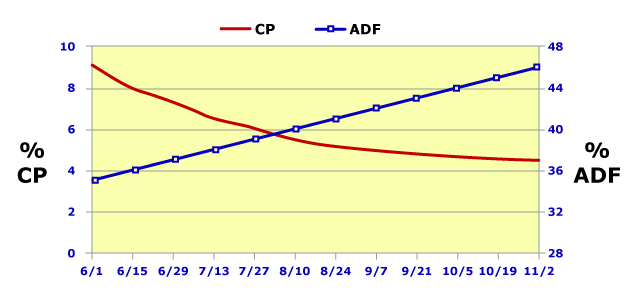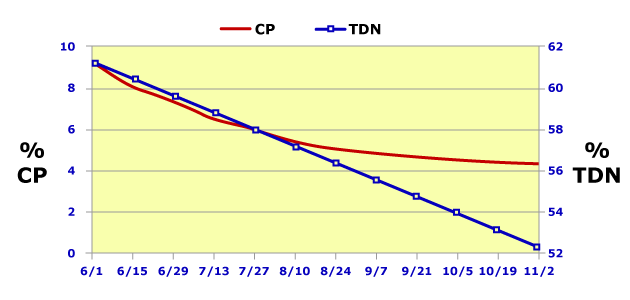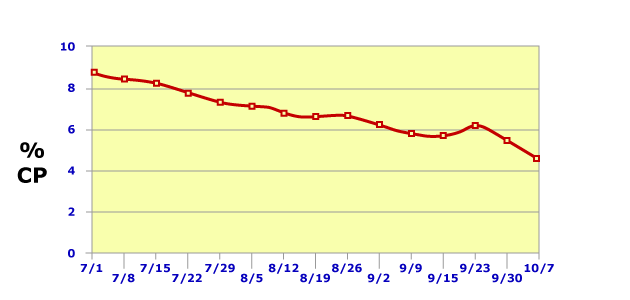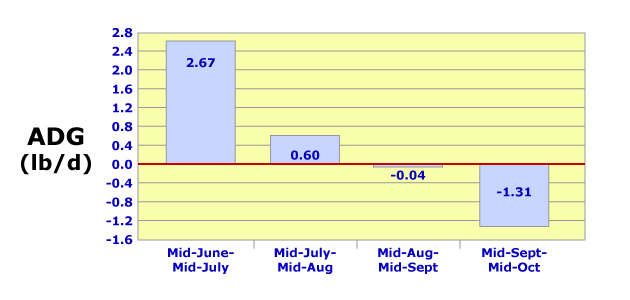|
|
 |
| Welcome | Getting Started | Resources | Site Map |
Week 8
Beef: Cow-Calf |
Instructions for listening to audio clips
- Download the QuickTime Player to listen to the audio files.
- Read the QuickTime Instructions for installation help.
- Download the RealPlayer to listen to the audio files
- Instructions are on the RealPlayer download page
Forages
Follow along with the audio...
- Majority of Beef Production is from forages
- Forages are our primary source of
- Energy
- Protein
- Many Minerals and Vitamins
- In most cases we are supplementing our forages
- We also may act to enhance utilization of forages
Why Are Forages Important?
- We do have some beef produced, or a percentage of beef from concentrate feeding.
- However, the majority of beef production arises from forages in the U.S. and especially worldwide.
Maturity and Forage Quality
- As forage plants and(or) hays mature, “quality” declines
- CP and TDN decrease
- NDF increases
- Estimate of intake
- ADF increases
- Estimate of digestibility
- Equals decreased digestibility and CP
% of BW |
|
|---|---|
Low Quality |
1.5-2.0 |
Medium Quality |
2.0-2.5 |
High Quality |
2.5-3.0 |
Spring Range |
2.4-2.9 |
Summer Range |
1.8-2.4 |
Fall Range |
1.7-2.2 |
| Winter Range |
1.4-1.8 |
% TDN |
%CP |
|
|---|---|---|
Mid-gestation |
44 |
6.3 |
60-90 days precalving |
48 |
7.0 |
Lactation (10 lbs) |
56 |
8.5 |
| Lactation (20
lbs) |
58 |
10.7 |
Maturity: CP & ADF

Maturity: CP & TDN

Crude Protein Content of Summer Range

Cow Gains During Summer Grazing

Calf Gains During Summer Grazing 
Summer Range
- Cows and calves weight gains are different
- Options for increasing ADG during end of gazing period
- Early weaning
- Supplementation
- Removal from summer range
- Creep feeding
Problems with Low Quality Forages
- If CP is less than 7% in diet, inadequate to maintain rumen function
- Energy in the forage is of little use without protein to stimulate microbial fermentation
| |
| Welcome | Getting Started | Resources | SiteMap |